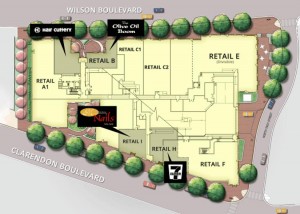
Editor’s Note: This sponsored column is written by Nick Anderson, beermonger at Arrowine (4508 Lee Highway).
Looking for a quick read about craft beer this week (besides this column right here)? Check out this retrospective on Founder’s KBS; it’s almost a mini-history of how quickly “big beers” and bourbon barrel-aged everything became widely popular seemingly overnight.
The article caught my eye not only because seeing the letters “KBS” paralyzes me with fear (retail quirk), but because I’ve been thinking about the pros and cons of the proliferation of barrel-aged beers lately. I’m the first to admit that bourbon barrel-aged beers aren’t for everyone, and for those of us that enjoy them not every one that’s made is good.
There are a lot of imbalanced bourbon barrel beers out there, whether by virtue of being too “hot” (boozy, astringent to the point of unpleasantness), too sweet, or the result of beer styles being applied to barrels that perhaps shouldn’t have been. Personally, I still think after all these years that when bourbon barrel-aging works, it’s great. What I’ve been curious to see is a greater diversity of barrels being used for aging beer, and now we’re starting to see that happen.
Wine barrels seem like a logical next step to me, and more breweries are beginning to experiment with them. Victory has found success with Red Thunder (their Baltic Thunder Porter aged in red wine barrels) and White Monkey (Golden Monkey Tripel in white wine barrels), and Allagash has aged its Interlude in red wine barrels for years, making for an elegant Belgian-style Ale with the vinous notes you’d expect.
Not all experiments work out, of course; I think breweries looking to use wine barrels either should have a knowledgeable “wine guy” on staff or one who can consult them in barrel selection. It’s too easy to overlook elements like Brettanomyces that are widely used and accepted in beer but considered a flaw in wine.
Brett can make some beers more interesting, but if you’re building a wine barrel aged beer for cellaring the wild yeast can sap the beverage of sweet or fruity notes prematurely. Scaldis Prestige de Nuits is a great example; it’s a wonderful Belgian Quadrupel aged in barrels bought by the brewmaster at the Hospice de Nuits St. George. With the barrels emptied and bottled back at the brewery, the Prestige was added to the freshly emptied barrels. The combination is magic.
Belgian brewery Hof Ten Dormaal has been trying out alternative wine/spirits barrels with its Barrel Aged Series. Dormaal has spent the past couple of years taking its outstanding Blond and Dark Ales and putting them in everything from Armagnac barrels to Port, Madeira, Sherry, Brandy, and Grappa barrels. They’ve even sourced Scotch barrels from Ardbeg and Port Charlotte. (more…)



